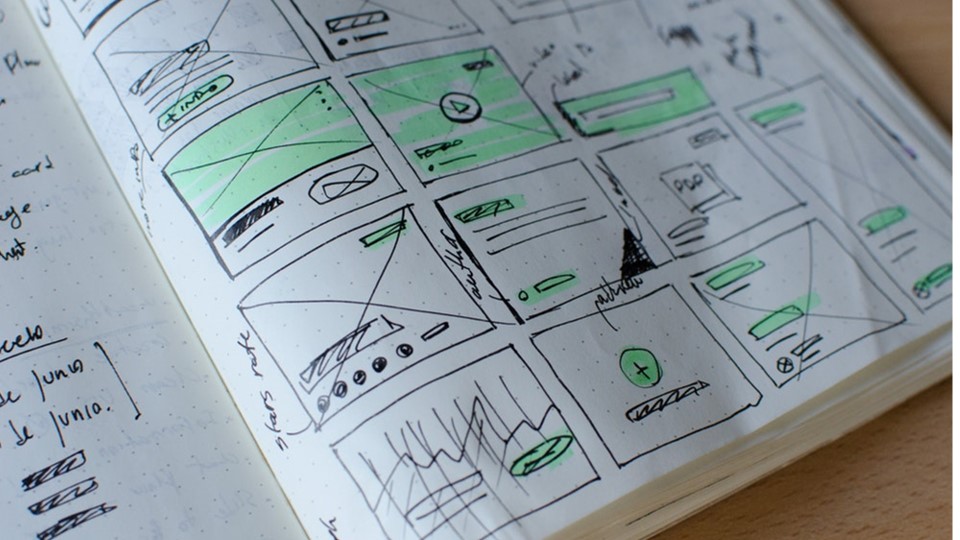
what is UX design?
User Experience (UX) design aims to remove friction from an experience for those who both use and deploy it. Good UX design boosts user satisfaction by providing better efficiency, functionality, and usability.
why market researchers should care about UX
Much of what modern market researchers do has UX at its core. For example:
- Online surveys and communities are a digital experience for participants (users). By understanding how users think and interact with these platforms, researchers can give them a better experience, engaging users and generating high quality data because of this
- Client debriefs are a learning experience. Making this experience captivating and dynamic for clients is more likely to make what you’re teaching them memorable. Increased memorability will improve the chance of clients actioning your teachings
However, the benchmark of what constitutes ‘good UX’ for research participants and clients isn’t set by the market research industry. It’s set by platforms and events outside of the research world. For example, online UX benchmarks are set by BuzzFeed and Facebook. Similarly, face-to-face learning UX benchmarks are set by TED and museum exhibitions.
Resultantly, the benchmark for UX is high. However, by learning the following seven principals of UX design, market researchers can better engage both research participants and clients.
seven principles of UX design for market researchers
narrative creation
what is it?
Storytelling is at the heart of UX design because humans engage with stories. Good storytelling takes complex ideas and transforms them into manageable pieces of information while building an emotional connection. To keep stories engaging, keep narratives simple and coherent.
how can market researchers utilise it?
Don’t try to fit too many themes into client-facing outputs. The chance of anymessage being communicated by adverts reduces significantly the more messages they try to create. Don’t let your insight communication fall foul to this.
Von Restorff effect
what is it?
When multiple elements are similar, the most differentiated element stands out. This is most effective for call-to-actions on digital platforms. These are usually buttons that prompt the user to do something – e.g. a sign in button.
how can market researchers utilise it?
Make key takeaways stand out by having them presented slightly differently to the rest of your aesthetic is effective at ensuring key takeaways are read, understood and actioned.
law of proximity
what is it?
Placing elements within close proximity of each other signals they are grouped together. The psychology behind this is that the human brain has a natural habit of organising things together to make better sense of them.
how can market researchers utilise it?
To visually compare customer segments in reports, place one segment and its sub segments on the left and the next segment and its sub segments on the right. This shows that segments are grouped near to, or far away, from one another.
Hick’s law
what is it?
The more choices users have, the longer it takes for them to decide. Best practice is therefore to keep options simple and give a minimal amount of choices.
how can market researchers utilise it?
Within survey design, try to keep your options simple. This will maintain engagement and avoid overwhelming participants. The example below shows how to effectively lay out survey answer options:

Miller’s law
what is it?
A typical memory span can only hold 7 (+-2) items. Good UX design organises content into groups of 5-9.
how can market researchers utilise it?
Keep key action points for clients in the 5-9 range. Too often natural gravitation towards using 3 (not enough) or 10 (too many) for key takeouts is deployed.
serial position effect
what is it?
Users best remember the first and last elements in a series. Putting the most important elements at the start and end, with the least important elements in the middle, help make an experience memorable.
how can market researchers utilise it?
Place key insights at the start and end of debriefs and reports to ensure they’re remembered.
Jakob’s Law
what is it?
UK residents typically spend 24 hours a week online. Resultantly, people are conditioned to the norms of the digital landscape. For example, forwards and backwards buttons are always assumed to be in the top left corner. Jacob’s Law states that you shouldn’t reinvent the wheel, simplify your users learning process by keeping key elements the same.
how can market researchers utilise it?
Don’t over-obsess about innovating the experiences you offer participants and clients. Obsess about experiences being effective at engaging participants/educating clients. Consistency is essential to experiential effectiveness – unnecessarily innovate at your peril.
next month…
In next month’s Monthly Dose of Design we’ll look at key tips to improve storytelling.
This post was originally published on Greenbook
By Emma Galvin, Creative Executive & Nicholas Lee, Senior Creative Executive
if you would like further information, please get in touch via:
egalvin@northstarpresents-volvo.com or nlee@northstarpresents-volvo.com




